Comprehensive Insights on Used Commercial Wood Chippers
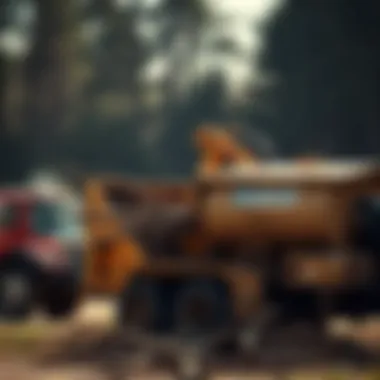
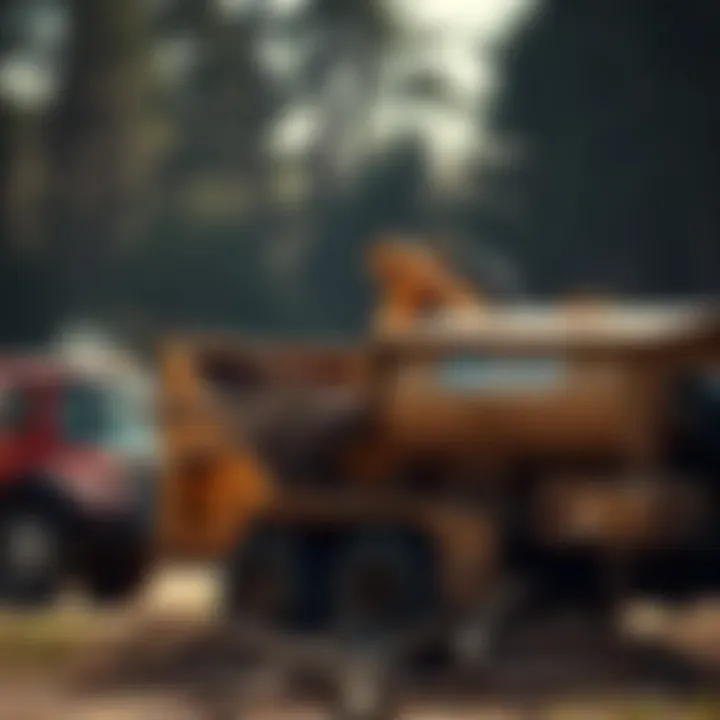
Intro
In the world of forestry, the equipment one uses can be the difference between a productive day and a struggle against the elements. Used commercial wood chippers stand as a testament to the balance of efficiency and sustainability. These machines transform waste into valuable resources, making them indispensable for professionals involved in woodland management. By investing in such equipment, one can enhance workflow and contribute positively to the environment.
The subsequent sections of this guide aim to delve deeper into the factors that make purchasing used wood chippers a strategic move. With insights on forestry practices, sustainable management techniques, and innovations in the field, this guide prepares you to make informed decisions about wood chippers that align with your operational needs and environmental responsibilities.
Understanding Wood Chippers
When diving into the world of used commercial wood chippers, it's essential to start with a thorough understanding of what these machines are and how they function. Wood chippers play a vital role in forestry, landscaping, and maintenance work. They are used to convert tree waste into manageable chips, which can be used for mulch, composting, or biomass fuel. Understanding the various types and features of wood chippers allows potential buyers to make informed decisions that align with their specific needs.
What is a Wood Chipper?
A wood chipper is a versatile machine designed to shred wood and other organic materials into small pieces. These machines come in a variety of models, which cater to different scales of operation, from small handheld versions suitable for residential use to robust industrial chippers used on large timber operations. The primary function of a wood chipper is to reduce the volume of wood waste, making it easier to manage and dispose of. By turning large, cumbersome branches into chips, these machines allow for better space utilization and can even contribute to sustainability by turning waste into a valuable resource.
Types of Wood Chippers
Each type of wood chipper has its own unique benefits and is suited to specific tasks. Understanding these variations can help determine which type is most appropriate for a given job.
Drum Chippers
Drum chippers are characterized by their rotary drum that spins blades to cut wood into chips. One of the standout features of drum chippers is their high production capacity. They can handle larger diameters of material, making them suitable for thick branches and even whole trees in some cases.
Advantages: Drum chippers are known for their speed and efficiency. The design allows for quick processing, which is ideal for heavy-duty jobs.
Disadvantages: However, they can be bulkier and more difficult to transport, and replacement parts might turn into a costly affair depending on the brand.
Disc Chippers
Disc chippers, as the name suggests, utilize a rotating disc with blades attached to cut materials. These machines are particularly effective for smaller branches and are often favored for their precision in creating uniform chips.
Advantages: The minimal maintenance required and the ability to produce consistently sized chips make disc chippers a preferred choice for many commercial operators.
Disadvantages: They may not be as powerful as drum chippers when handling larger logs, and they might struggle with tougher, denser timber.
Chain Chippers
Chain chippers operate with a different mechanism, using a chain or a conveyor system to feed wood into a cutting chamber. This type is particularly known for its ability to shred waste from various plants like shrubs and bushes, in addition to wood.
Advantages: They tend to be lighter and more portable, perfect for those who need mobility in their operations.
Disadvantages: On the downside, their cutting efficiency may lag behind that of drum and disc chippers, particularly with larger or harder materials.
Key Features of Commercial Wood Chippers
Understanding the critical features of commercial wood chippers is essential for ensuring effective performance and longevity of the equipment. Different models come equipped with unique specifications that make them more suitable for particular tasks.
Cutting Mechanism
The cutting mechanism is fundamental to how efficiently a wood chipper processes material. The design of the blades and their arrangement dictate the speed and quality of the cutting.
Advantages: Efficient cutting mechanisms can greatly enhance productivity, allowing users to finish jobs quicker.
Disadvantages: However, complex mechanisms may lead to increased maintenance needs, which can add to long-term costs.
Engine Power
The engine power of a wood chipper essentially determines the type of materials it can handle and how efficiently it operates. Higher power usually means the machine can process tougher, denser materials.
Advantages: A powerful engine translates to better performance and reduces the risk of jamming.
Disadvantages: That said, more powerful engines can lead to increased fuel consumption and may require more regular upkeep.
Feed Capacity
Feed capacity defines how much material can be fed into the chipper at once. This is often measured in inches and indicates the maximum diameter of material the chipper can accept.
Advantages: Larger feed capacities mean less time spent feeding branches into the machine, which is crucial for efficiency in large-scale operations.
Disadvantages: However, a larger feed system may come with a higher cost and more cumbersome design, potentially hindering portability.
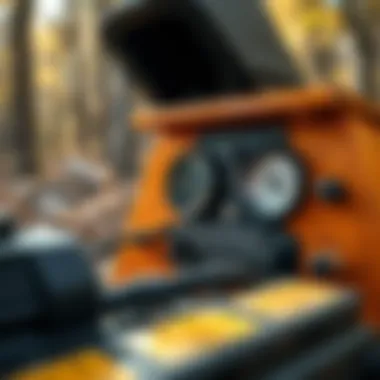
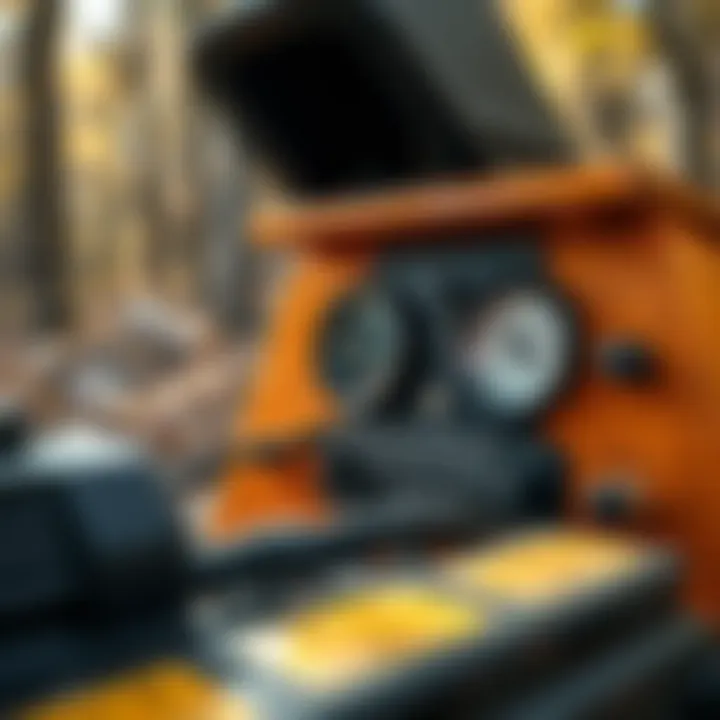
Understanding these fundamental concepts about wood chippers lays the groundwork for making informed decisions when it comes to purchasing used equipment. Being well-informed about the various types and features ensures that buyers can choose a wood chipper that best fits their needs and matches the demands of their work.
The Case for Used Equipment
As the world advances, industries are invariably pushed towards progress, yet there exists a compelling case for engaging with older technologies. When it comes to wood chippers, used equipment can present a more sensible choice than one might initially think. Purchasing a used commercial wood chipper offers pragmatic solutions that can align well with the budgetary constraints of many forestry operations. Understanding the intricacies involved is crucial for ensuring a successful investment. Let's take a closer look at some of the advantages that come with used commercial wood chippers.
Advantages of Used Commercial Wood Chippers
Cost-Effectiveness
One of the compelling points about used commercial wood chippers is their cost-effectiveness. Generally speaking, new equipment can delve deep into anyone's wallet, whereas good second-hand chippers can provide significant savings without skimping on performance. Consider the financial implications: a well-maintained used chipper might cost up to half the price of a new model, letting operators invest in other essential gear. The main attraction here is the economic reality that allows businesses to allocate their resources more effectively.
The unique feature about this cost-effectiveness lies in the scope of choices available. Since many used models retain reliability, buyers can still obtain machines with high durability at a fraction of the original price.
Reduced Depreciation
Used wood chippers often come with the advantage of reduced depreciation rates. New machines typically lose a hefty percentage of their value as soon as they roll off the lot. In contrast, a used chipper has already absorbed much of that initial depreciation, providing more value for the investment over time. Thus, when it comes to resale, the potential return could be higher when opting for a used model, particularly for brands with established reputations.
Moreover, this characteristic of reduced depreciation serves to attract budget-conscious buyers. Within the context of forestry, where every dollar counts, this feature is substantial.
Availability of Older Models
Many professionals often find themselves seeking machines designed for specific tasks that newer models may not perform as elegantly. The availability of older models opens up a treasure trove of options that might include machines known for unparalleled performance in particular tasks. Older models may deliver proven results, standing the test of time under demanding circumstances.
Additionally, the availability aspect plays a vital role. Used equipment markets often showcase a rich selection where enthusiasts and professionals alike can unearth hidden gems that are no longer in production. This characteristic allows buyers to hunt for chippers that complement their specific operational requirements effectively.
Potential Drawbacks to Consider
While engaging in the purchase of a used chipper may seem idyllic, drawbacks warrant thorough scrutiny. Here we discuss key factors that can impede such acquisitions.
Maintenance History
A crucial component of assessing any used equipment is examining its maintenance history. Proper maintenance can significantly influence the lifespan of a wood chipper. If past upkeep is poorly documented or neglected, the risk of hidden issues becomes a stark reality. For buyers, this means conducting due diligence which may involve asking the seller for maintenance records to ascertain how well the machine was cared for.
Highlighting the importance of this characteristic, backs up the decision-making process. Maintenance history serves as a transparent lens through which the equipment's future performance can be anticipated, where a history of neglect can lead to considerable pitfalls.
Current Condition
When contemplating a purchase, the current condition of the wood chipper is paramount. Visual inspections can provide key insights — looking at wear and tear is essential. Ensuring the equipment hasn't been put through excessively rough jobs is vital, as unseen damages could lurk beneath the surface.
Notably, a chipper in objectively good condition may yield lower follow-up costs. Consequently, understanding the machine's present state can substantiate a wise investment, contributing positively to the overall objective of operational efficiency and effectiveness in wood processing activities.
Technological Obsolescence
Given the rapid pace of technological advancements, it’s worth noting that some used wood chippers might be on the brink of becoming obsolete. This fact introduces an interesting dynamic into decision-making. While older models may offer reliability, they might lack features common in newer iterations, like greater fuel efficiency or enhanced safety mechanisms.
While this characteristic could provide appeal for nostalgic practitioners, it also opens the door for considerations about the future. Investing in a used chipper that may miss out on crucial modern conveniences might mean needing to upgrade sooner rather than later, challenging the long-term value.
In summation, while the allure of used commercial wood chippers carries significant benefits, one must tread carefully and weigh potential drawbacks effectively. By understanding the intricate balance of these factors, stakeholders in forestry can make informed decisions to further their operations successfully.
Factors Influencing Purchase Decisions
When in the market for used commercial wood chippers, the decisions made can profoundly impact not just your budget, but also the efficiency with which you process wood. Navigating these decisions involves careful consideration of your unique needs, budget constraints, and seller reliability. Each of these areas plays a pivotal role in determining the success of your investment.
Assessing Your Needs
Type of Terrain
The sort of terrain where you plan to use a wood chipper can significantly shape your choice. For instance, if you’re working in rugged, hilly regions, a chipper with robust mobility features may be necessary. Meanwhile, flatter terrains might allow you to prioritize other aspects, such as power or feed capacity. By understanding your terrain, you're not only optimizing for your current situation, but also future-proofing your investment against potential geographical shifts in your operation.
Volume of Materials to Process
Knowing the amount of material you intend to process is essential. If you expect to handle large quantities, opting for a chipper with higher feed capacity becomes crucial. This is particularly true for commercial forestry operations where efficiency translates directly to profitability. On the flip side, if your processing needs are on the smaller side, there might be no need for a giant machine that could end up as overkill, draining your budget and your resources for maintenance and operation.
Frequency of Use
The frequency with which you plan to use your wood chipper can also influence your decision. Regular use often necessitates a more durable and higher-performance model, ensuring longevity and reliability. Otherwise, purchasing a less expensive, lighter model for occasional tasks might suffice. The key is to match the chipper's capabilities to how you intend to use it, balancing performance with practicality, avoiding any potential mismatches that can lead to frustration and unforeseen costs.
Budget Considerations
Initial Cost vs. Long-Term Value
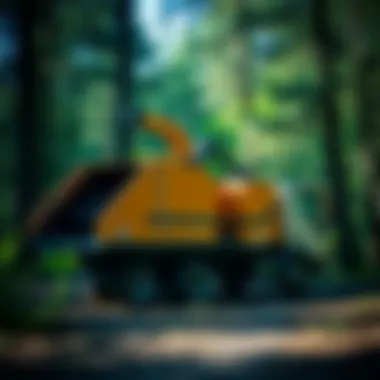
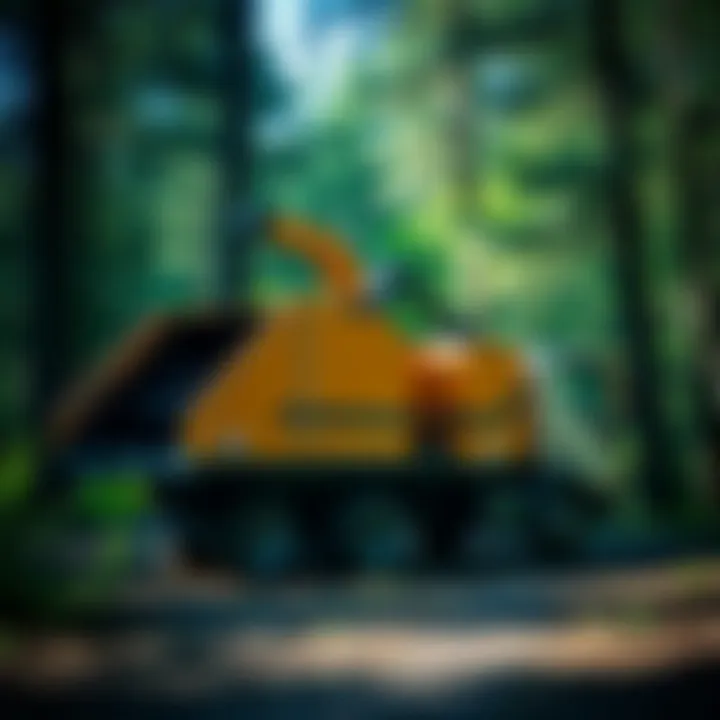
When it comes to budget, the initial cost of a wood chipper is only half the story. Investing more upfront in a quality piece of equipment could mean fewer repairs and longer lifespan, saving you money in the long run. On the other hand, cheap alternatives might lure you in but could lead to more frequent failures and replacements, thus turning out to be a false economy. Weighing immediate costs against anticipated future expenses should be part of your overall financial plan for purchasing a used wood chipper.
Financing Options
Not everyone has the cash on hand to make a full purchase, which is where financing comes into play. Various options can help ease the burden: loans, leasing, or payment plans from the seller can often spread out the cost over time. However, it’s important to read the fine print. Some financing arrangements come with hidden fees that may cut into your budget in ways you hadn’t anticipated. Understanding these options helps maintain a favorable financial position while making a necessary investment in your business.
Insurance Costs
Don’t overlook the insurance. The cost to insure the machinery plays an essential role in the total ownership costs. In some instances, used equipment may require more frequent inspections or higher premiums due to age or previous history of repairs. Conversely, newer models—even if they're still used—might attract lower insurance rates. Assessing potential insurance costs as part of your purchase decision ensures that what appears to be an attractive deal doesn't end up being a financial burden down the line.
Evaluating Seller Credibility
Reputation Checks
Once you have defined your needs and figured out your budget, next is figuring out from whom to buy. A seller's reputation can often tell you everything you need to know. Reading reviews, asking for references, and even checking online forums can give you insight into what to expect. A seller with a solid reputation often means less risk attached to your investment.
Warranty Offerings
A warranty can be a telling indicator of a seller’s confidence in their machines. If a seller offers a good warranty on a used wood chipper, it might indicate that they’ve stand behind their product's quality. However, warranties can vary widely; some cover parts, while others might include labor or specific components. Ensuring that you understand what is included will help guard you against unexpected repair expenses.
Return Policies
Lastly, examining the seller's return policy can offer peace of mind. Should the wood chipper not meet your expectations or have unforeseen issues shortly after purchase, having the option to return it can be invaluable. Various sellers have differing return policies, with some offering full refunds while others only allow exchanges. Knowing your rights here can safeguard your business investment and ensure you're not stuck with a chipper that won't get the job done.
Conclusion: Understanding these factors when determining which used commercial wood chipper to purchase helps build a strong foundation for an informed decision. A comprehensive assessment can greatly enhance your operational effectiveness and financial performance.
Where to Find Used Commercial Wood Chippers
Finding the right used commercial wood chipper is crucial for anyone involved in forestry or landscaping. The source from which you purchase can impact not only your budget but also your long-term satisfaction with the equipment. Knowing where to look for these machines can enhance your chances of finding a unit that meets your needs at a price that won't break the bank. The following sections highlight online marketplaces and local options, providing insights into the unique benefits and considerations of each.
Online Marketplaces
eBay
eBay has become a well-known platform for buying and selling just about anything, including used commercial wood chippers. Its expansive reach allows buyers from every corner of the globe to access various listings. One of the standout features of eBay is the auction format, where you might snag a great deal if you play your cards right. The platform includes buyer protection policies that can help in getting a fair transaction. However, one must be cautious of potential sellers who may not have the best reputation, so it’s vital to check reviews and feedback.
Craigslist
On the other hand, Craigslist provides a more localized approach to finding equipment. This platform allows you to connect directly with sellers in your area, which can foster better communication and negotiation. The unique aspect of Craigslist is that you can sometimes find more personalized listings with local insights into the condition of the equipment. This site does have its drawbacks, particularly regarding the lack of buyer protection compared to larger platforms, so it’s vital to be vigilant when arranging meetings to inspect potential purchases.
Specialized Equipment Websites
For those looking for a tailored experience, specialized equipment websites can be treasure troves. Platforms dedicated to heavy machinery often provide detailed listings specifically for wood chippers, showcasing their features and specifications clearly. This could save time compared to sifting through general listings on broader sites. The downside is that these sites might not have as comprehensive a range of options as more generalized marketplaces, but they often have a customer service team ready to assist in your search.
Local Dealerships and Auctions
Benefits of Visiting In-Person
Looking locally at dealerships and auctions can prove beneficial for prospective buyers. Visiting in-person allows you to critically assess the wood chipper's condition and ask the seller any pressing questions you might have. You can gauge the equipment firsthand, rather than relying merely on photos or descriptions. One significant advantage is negotiating power; seeing the machine physically enables potential buyers to bargain effectively. However, the downside could be a limited inventory compared to online options, which may restrict your choices.
Networking in the Community
Community connections yield great opportunities when searching for used wood chippers. By engaging with local tradespeople or attending forestry-related gatherings, you tap into a network of contacts who may know of machines quietly for sale. The unique advantage here is the blend of local knowledge and potential word-of-mouth recommendations. Networking could lead to finding well-maintained equipment from trusted operators, but this route requires time and effort in building relationships.
Finding Local Deals
In tandem with networking, the chance of finding local deals cannot be dismissed. Local publications or community boards often showcase classified listings for used equipment. This option may uncover hidden gems often overlooked by broader market searches. The primary advantage is that you can discover deals close to home without bulky shipping costs. Keep in mind, though, that local availability might fluctuate, and it may take a bit of patience to find that perfect deal.
Inspection and Testing Before Purchase
Before diving into a purchase, especially for a used commercial wood chipper, it’s crucial to conduct a thorough inspection and testing. This stage is paramount; after all, you wouldn’t buy a car without a test drive, right? By properly assessing a wood chipper, you can identify potential issues that might not be apparent on first glance, preventing future headaches and unexpected repair bills. Ignoring this step could lead to a costly mistake and significantly impact your operations.
Performing a Visual Inspection
A visual inspection serves as the first line of defense in ensuring that the wood chipper is in sound condition before you make a commitment to buy.
Checking for Wear and Tear
Checking for wear and tear is like doing a health check on the machine. You want to spot any signs of damage or excessive use. Look for cracks, dents, and rust on the body. Noticing such issues early can help gauge whether the chipper has been well-maintained. A chipped paint job or surface rust might seem superficial, but they can signal deeper problems underneath, suggesting neglect. Identifying these indications before purchase can save on costly repairs down the line. This step is not just beneficial but essential for informed decision-making; no one wants a lemon!
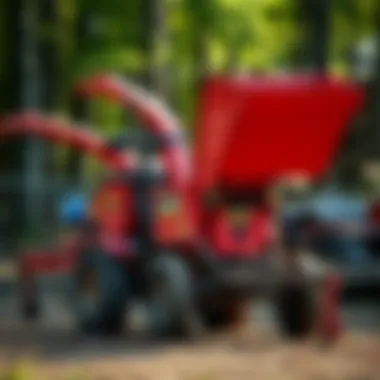
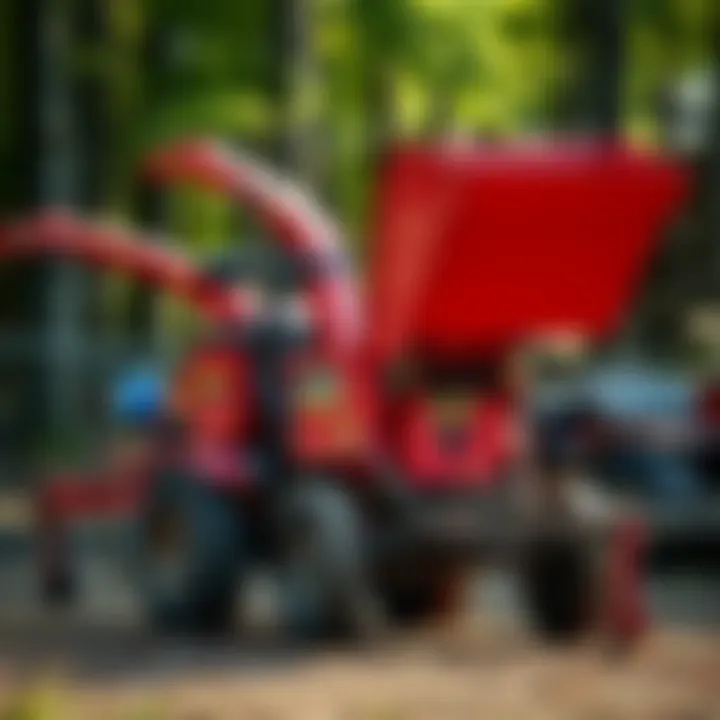
Examining the Cutting Mechanism
The cutting mechanism of a wood chipper is its heart and soul; if it’s not functioning correctly, it can render the entire machine useless. Examine the blades closely – they should be sharp and free of chips or dings. Dull or damaged blades can lead to inefficient operation and ultimately more wear on the engine, which can translate into higher operational costs. Ensuring that the cutting mechanism is in good shape is key for consumer satisfaction and effective wood processing. A well-kept cutting mechanism indicates that the previous owner likely took care of the machine, and that’s a nice sign!
Assessing Overall Build Quality
Assessing overall build quality is about looking at the craftsmanship behind the chipper. A sturdy, well-designed machine will last longer and perform better. Look for solid welds, quality materials, and robust components—this speaks volumes about durability. There's no point in investing your money into a flimsy machine that won't stand the test of time. The quality of construction affects not only longevity but also maintenance needs. A well-built wood chipper typically leads to fewer repairs and a more reliable performance—certainly a feature you want in any equipment!
Operational Testing
Once the visual inspection is complete, the next step is operational testing. This is where you can witness the machine in action and assess its actual performance.
Starting the Engine
Starting the engine gives you valuable insight into the machine's condition. A reliable wood chipper should start smoothly without excessive cranking or sputtering. If the engine struggles to turn over or makes strange noises during startup, it may indicate more severe underlying problems. A smooth start could signal a well-maintained machine, suggesting fewer repairs and a more dependable tool in your operation.
Feed and Discharge Functionality
Next up is checking the feed and discharge functionality. It's not enough for the machine to only turn on; it should successfully feed materials and effectively discharge processed chips. This step is critical as it mimics the actual operation you'd expect in the field. Look for any jams or inconsistent feeding, which could indicate issues with the mechanism or lack of maintenance. Ensuring these components work well can significantly enhance your processing efficiency down the line.
Noise Levels During Operation
Finally, listen to the noise levels during operation. While all machinery creates some noise, excessively loud or irregular sounds could suggest problems with the engine, bearings, or other components. Regular checking here can be crucial; loud machinery is often a sign of stress on the machine that might not be immediately visible. Moreover, keeping an eye on operational noise helps you gauge how the chipper will fit into your working environment—too much noise might not bode well for community relations or regulatory compliance.
"Equipment with a little bit of wear can still have plenty of life left, but knowing how to inspect can save you a bundle!"
By focusing on both the visual inspection and operational testing before purchase, you can make a more informed decision, ensuring that the wood chipper will meet your needs and operate effectively for years to come.
Post-Purchase Considerations
When you've made the leap to purchase a used commercial wood chipper, your responsibilities don’t just end there. There are several key areas to focus on to ensure your investment operates at optimum efficiency and longevity. These considerations play a significant role not only in maintaining performance but also in enhancing safety and productivity in your operations.
Maintenance Practices
Regular Cleaning Procedures
After each use, it’s wise to conduct a thorough cleaning of your wood chipper. Regular cleaning prevents accumulated debris and sap from affecting the machine's functionality. Tar buildup, if left unchecked, can cause operational issues or even damage the cutting mechanisms over time. A habit of cleaning the machine can enhance its performance significantly, ensuring it runs smoothly each time you need it.
This practice is advantageous especially for those working in environments with varying types of wood and debris. Using compressed air can help in reaching intricate parts that a simple wipe down won't cover. This ensures not only a cleaner tool but also prolongs its operational lifespan.
Sharpening Blades
Keeping blades sharp is another non-negotiable aspect. Dull blades do not only impede your chipper's efficiency but can also pose safety hazards; they require more force to operate, leading to operator fatigue or even accidents. Regular blade maintenance ensures clean cuts and reduces the strain on the engine.
Sharp blades are a popular choice because they enhance the quality of the output and increase production rates. However, it’s crucial to balance sharpening with potential wear. Over-sharpening can lead blades to lose their effectiveness and durability more quickly. Knowing how to balance this is essential to maintain the machine well
Storage Recommendations
Your wood chipper likely requires a little extra TLC when it comes to storage. Ideally, it should be kept in a dry, sheltered area to avoid rust and weather-related damage. If storage outdoors is unavoidable, consider investing in a high-quality tarp or cover to protect the machine.
The key characteristic of smart storage is to keep your chipper away from extreme humidity or direct sunlight. This prevents the wearing of materials which could lead to larger issues down the line. Not all methods are created equal, so weighing the costs against potential damage can be a wise strategy for preserving your equipment.
Operational Training
Safety Protocols
Proper training in safety protocols cannot be overstated. Operators must be familiar with not just how to operate the machine, but the precautions necessary to keep themselves safe.
Embedding safety from the start is beneficial as it fosters a culture of respect and caution around potentially dangerous equipment. Adequate training signs can often highlight faster solutions to common issues, whether it be a jammed chipper or understanding emergency shut-off processes.
An approach emphasizing proper gear usage and quick response to hazards can save a lot of trouble. Each operator needs clear knowledge of what to do in case something goes wrong.
Efficient Use Techniques
Understanding efficient use techniques can make or break your experience with commercial wood chippers. Techniques such as proper feeding of branches and logs can significantly enhance throughput. Knowing how to manage feed material minimizes downtime and maximizes productivity.
An essential characteristic here is gauging the type of materials suitable for your specific chipper model. Using incompatible or oversized materials can lead to headaches for operators and costly repairs down the road. Training sessions on this aspect can boost overall output and provide a smoother operational flow.
Training Resources Available
Many resources are available to bolster your operational training. Instructional videos or manuals specific to your model enhance understanding and capability within your team.
These resources can be beneficial; however, one should ensure they are getting guidance from well-respected sources. Recommended training resources can offer valuable insights into common pitfalls to avoid as well as best practices that can enhance operation. It's worth dedicating some time to find quality educational materials that suit the specific needs of your chipper.
It’s crucial to pair practical experience with theoretical knowledge, as it prepares operators for anything they may encounter on the job.
In summary, keeping your used commercial wood chipper running at its best requires diligence in both maintenance practices and operational training. Consider these elements as stepping stones towards mastering your equipment for both safety and efficiency.















